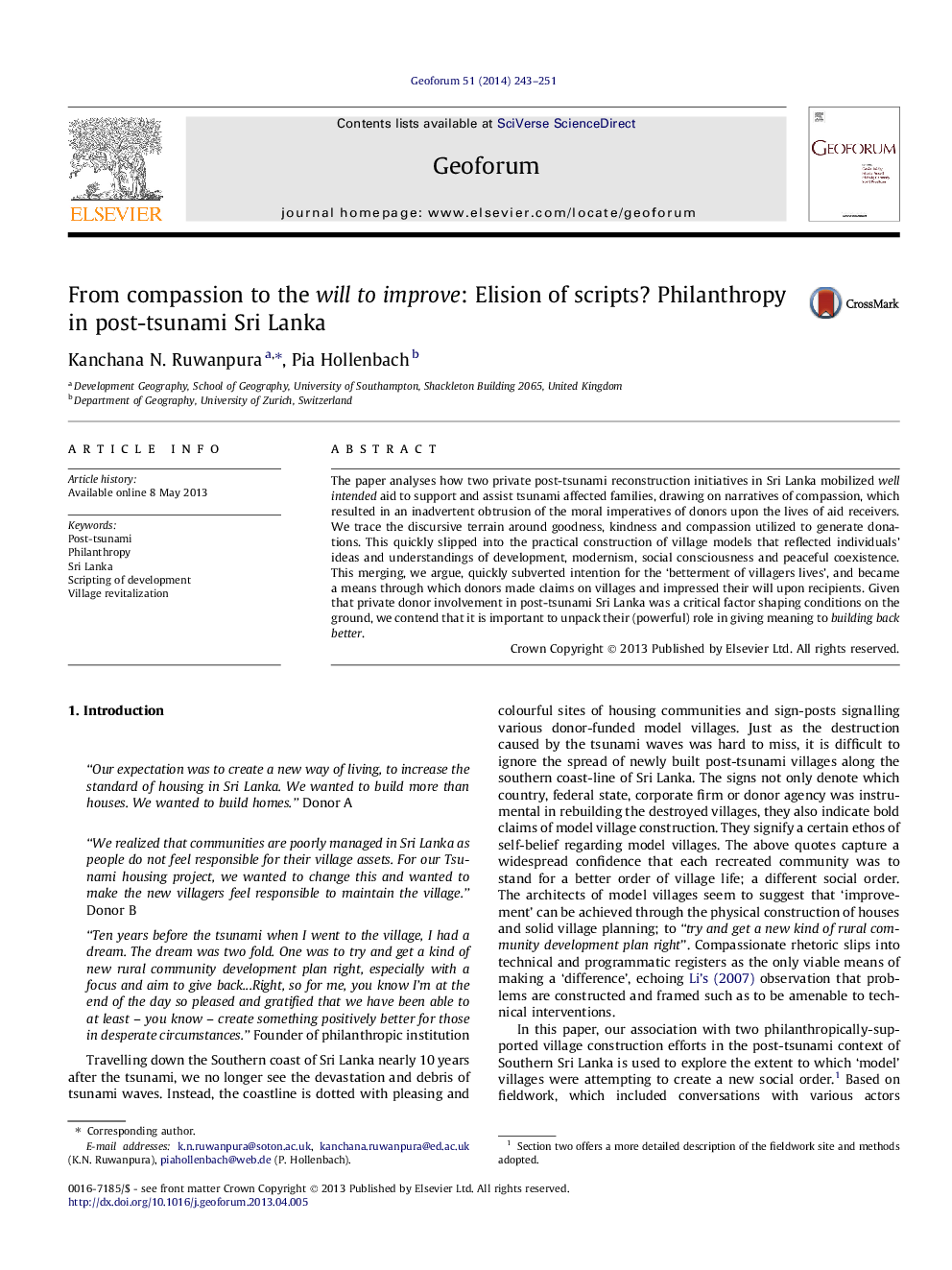| Article ID | Journal | Published Year | Pages | File Type |
|---|---|---|---|---|
| 5073917 | Geoforum | 2014 | 9 Pages |
The paper analyses how two private post-tsunami reconstruction initiatives in Sri Lanka mobilized well intended aid to support and assist tsunami affected families, drawing on narratives of compassion, which resulted in an inadvertent obtrusion of the moral imperatives of donors upon the lives of aid receivers. We trace the discursive terrain around goodness, kindness and compassion utilized to generate donations. This quickly slipped into the practical construction of village models that reflected individuals' ideas and understandings of development, modernism, social consciousness and peaceful coexistence. This merging, we argue, quickly subverted intention for the 'betterment of villagers lives', and became a means through which donors made claims on villages and impressed their will upon recipients. Given that private donor involvement in post-tsunami Sri Lanka was a critical factor shaping conditions on the ground, we contend that it is important to unpack their (powerful) role in giving meaning to building back better.
â¢Analyses how well intended aid was mobilized drawing on narratives of compassion.â¢Cultural and moral tropes of goodness, kindness and compassion are traced.â¢A will to improve the lives of aid receivers is the effect of compassionate tropes.â¢Model villages reflect donor conceptualization of nationalist villages, but not everyday life.â¢The problematic shift from state to non-state involvement in reconstruction projects is traced.
